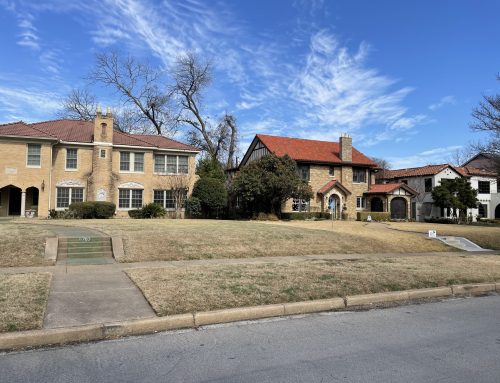Back Talk reported here Monday that Woodrow Wilson has been selected as DISD’s first International Baccalaureate (IB) high school. Woodrow principal Ruth Vail talked about the selection, its impact on the school and what it means for the neighborhood in our eight-minute podcast (listen by clicking here).
Here’s some additional information about the program and how it will change the lives of neighborhood students and their families.
Woodrow’s IB program will be coordinated with neighboring J.L. Long Middle School, which is the Woodrow feeder school for 6th, 7th and 8th graders, Vail says. By implementing beginning elements of the IB program at Long (9th graders who want to be in the IB program, for example, must take Algebra in 8th grade, Vail says), DISD hopes to boost the learning environment there, too, along with encouraging students to begin planning for life after high school earlier.
DISD’s high school redesign program (click here to download a DISD pdf discussing the redesign) is designed to put all students on a track to be successfully prepared for college or to join the workforce, according to the district’s website. Among the pathways for students identified on DISD’s website are health sciences, architecture and construction, communications, law, information technology, business, and hospitality and tourism. Woodrow’s IB curriculum offers general college preparatory instruction rather than specific workforce training.
If you’re familiar with the Advanced Placement courses currently offered at Woodrow and other DISD high schools, you know that AP courses are more rigorous for the students, involving a higher degree of difficulty and work, and they also offer the opportunity for students to earn college credit for those who pass a year-end AP test and score at a certain level. The IB program is essentially a souped-up version of the AP program (this is probably a debatable statement given the competition between AP and IB) with supposedly even more rigor and independent projects for students, the same opportunity to earn college credit accepted at more universities (including more abroad), and even an opportunity to learn along with students throughout the world studying the same topics.
Vail says that Woodrow’s new multi-media classroom will be fully operational well before the IB kickoff, allowing Woodrow students to connect via video with students in other countries as part of the learning process (hence the "international" aspect of the program). To learn more about the IB program, check out the links here and here. And here’s a U.S News & World Report ranking of the nation’s top IB high schools.
What does this mean for students and parents considering attending Woodrow? Here’s an excerpt about the program from the National Association of Student Financial Aid Administrators website that applies to Woodrow’s student mix and discusses IB’s goals and opportunities:
"Schools that offer IB courses are also helping schools integrate low-income and higher-income students. Low-income schools that offer IB courses are more successful at retaining children from higher-income backgrounds whose parents might otherwise send them to private or more affluent schools. At the same time, IB courses offered in traditionally low-income districts seem to help large numbers of low-income students better prepare themselves for college. The results seem to be in line with the Commission [on the Skills of the American Workforce]’s goals to raise the number of students who are truly prepared for postsecondary coursework."
That’s a tall order for a school like Woodrow, which mixes high-income and low-income neighborhood kids in a relatively small learning environment, but it’s exactly what DISD says it’s trying to do in boosting the rigor of its academic programs. The way Vail explains this on the podcast is that every student will have the opportunity to learn at the IB level; those who find that level too rigorous will have an opportunity to learn at a more traditional but less rigorous academic level also offered at Woodrow; and those who are unable or unwilling to learn at either level will be asked to select another "redesigned" high school that might offer a program or level of academic rigor more in line with that student’s ability or willingness to achieve.
Other issues to consider:
• Although Woodrow eventually will be open to transfers for students who want the IB program, neighborhood students automatically are enrolled in the IB program and don’t have to worry about being "accepted", Vail says.
• DISD’s TAG and Magnet programs will continue, but Woodrow’s IB program is expected to give parents and students a significant reason to stay in the neighborhood to attend high school, Vail says, specifically mentioning the Choose Woodrow campaign that received some publicity last spring.
• Although Woodrow is DISD’s first IB-designed high school, it likely won’t be the last. W.T. White and Hillcrest — which have long joined Woodrow at the top of the district’s academic achievers — have yet to be "redesigned". White has a long history as DISD’s best-performing AP high school (in terms of number of courses taken by students and number of qualifying grades on the year-end AP tests) and is expected to be moving toward some type of science/engineering specialty as part of its redesign.
There’s still a lot of work to be done to implement the IB program at Woodrow, Vail says, including developing the specific curriculum to be offered, training teachers and coordinating the school’s offerings with an addition that is planned as part of DISD’s latest bond program. The first IB courses probably won’t be offered until the 2010-2011 school year, and they may be combination IB/AP courses as the school makes the transition.
If you would like further information about the IB program at Woodrow, click here to email Vail.





